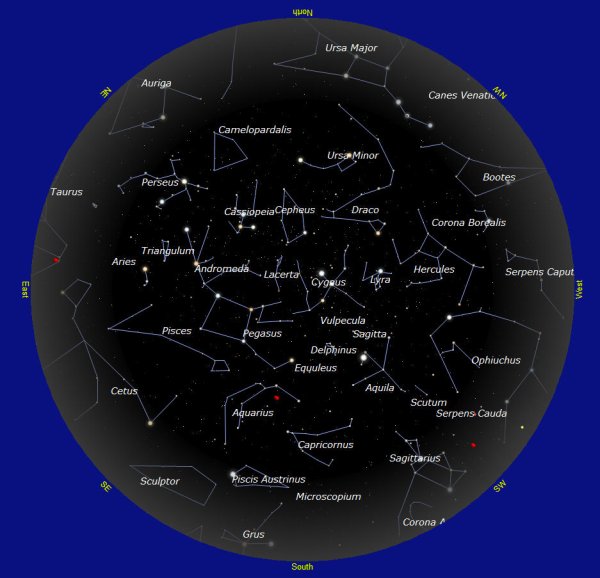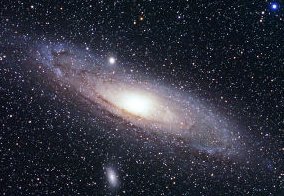
LAKE COUNTY – October is the beginning of fall. And there are popular songs that remind us of some of October’s celestial events.
First there is “Moondance” by Van Morrison (‘… it’s a marvelous night for a Moondance, with the stars up above in your eyes, a fantabulous night to make romance neath the cover of October skies’).
And while October skies might be a bit chilly for romance outdoors at night, there are certainly some bright stars overhead (see the star chart at the end of this article).
Our old friend, the Summer Triangle of 3 bright stars is slowly sinking into the west. But taking its place is the constellation of Pegasus, the great winged horse. The huge square that makes up the body of Pegasus can be seen dominating the southeastern part of the sky.
Attached to Pegasus is the constellation Andromeda, a beautiful princess in Greek mythology. In Andromeda there is a galaxy similar to our own – the Great Andromeda Galaxy. Through a telescope it is very big and bright – the light we see from Andromeda started its journey 2.5 million years ago. When we look at this galaxy, we are, in effect, looking back in time 2.5 million years!

Speaking of beautiful princesses, check out the constellation Cassiopeia on our star chart. This bright, “W”-shaped group of stars overhead is hard to miss.
In Greek mythology, Cassiopeia became the queen of Ethiopia. She was very vain, and a picture of her shows her seated brushing her hair. The ‘W’ represents the chair she is seated on.
And let’s not forget the moon, as suggested in our “Moondance” song. The moon will be at its fullest on Oct. 25.
If you think the moon looks larger when it is low on the horizon, it isn’t. That’s just an optical illusion – it’s the same size no matter where it is in the night sky.
To wrap up our musically inspired October skies, how about that old hit “Venus” by Frankie Avalon?
If you get up an hour or so before sunrise and look to the east, that very bright star is the planet Venus. Venus is the second planet from the sun. It has an atmosphere of almost pure carbon dioxide. Carbon dioxide traps all of the sun’s heat inside the planet’s atmosphere, and the result is a surface temperature that is higher than that of Mercury, the closest planet to the sun.

If you believe in global warming, Venus may provide a glimpse of the earth’s future if the trend is not stopped.
For more information about astronomy and local astronomy-related events, visit the Taylor Observatory Web site at www.taylorobservatory.org.
John Zimmerman has been an amateur astronomer for 50 years. He is a member of the Taylor Observatory staff, where, among his many duties, he helps create planetarium shows.
{mos_sb_discuss:2}